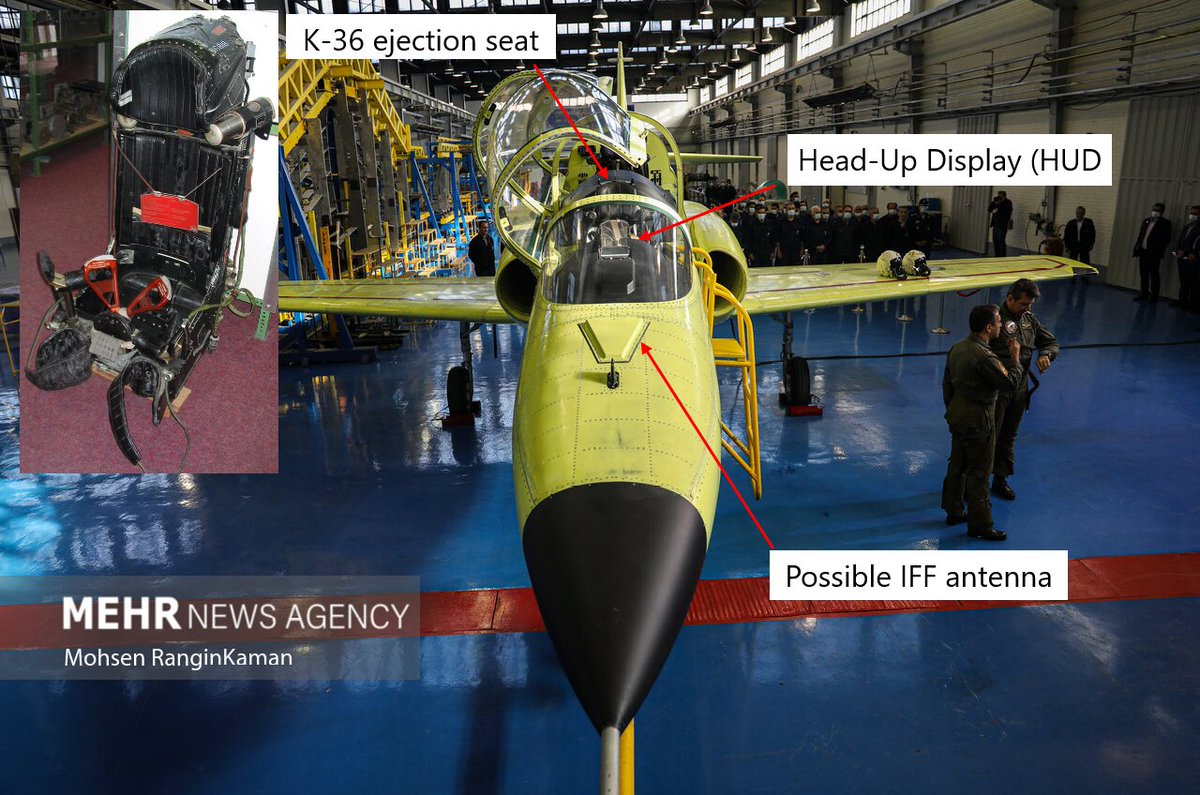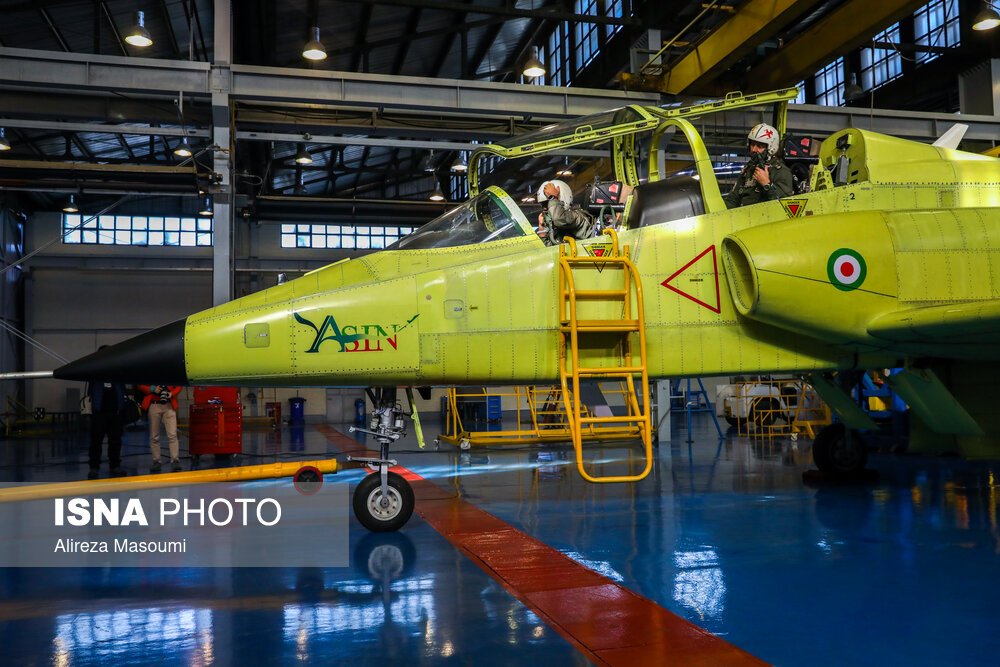First production version of 'Yasin', a twin-engine, subsonic intermediate/advanced trainer rolled out today in Tehran.
The production version has several differences with the initial prototype that show some progress in Iran's aviation industry - THREAD 🧵
The production version has several differences with the initial prototype that show some progress in Iran's aviation industry - THREAD 🧵

The production version has a significant number of external changes since the initial prototype, resulting in an overall sleeker airframe. 





Yasin is designed by HESA and manufactured under the Ministry of Defence (MODAFL). Components made by...
Nose section: Owj (IRIAF SSJ)
Seats, canopy, landing gear: HESA
Cockpit electronics: SAIRAN (IEI)
Tailplane and wings: PANHA (IHSRC)
Engine: IAIO
Fuselage: Unknown



Nose section: Owj (IRIAF SSJ)
Seats, canopy, landing gear: HESA
Cockpit electronics: SAIRAN (IEI)
Tailplane and wings: PANHA (IHSRC)
Engine: IAIO
Fuselage: Unknown




The turbojet engine is a non-afterburning version of Iran's J-85 copy, 'Owj'. It produces 3500 lbf (16 kN) thrust, weighs 240kg, is 1.7m long, and has a maximum turbine inlet temp. of 977°C. Two of these propel Yasin to Mach 0.8 and a service ceiling of 40,000 ft. 





Yasin (shown here with its old project name of Kosar) has broadly similar thrust/weight statistics to the BAe Hawk. I wrote a thread on it in 2019, note that the empty weight figure from the time is incorrect, the one in this image is accurate. 
https://twitter.com/AmirIGM/status/1184761423722897408?s=20

Yasin is intended to replace the ageing F-5B and FT-7 supersonic trainers currently serving in the IRIAF. Yasin has a glass cockpit and likely more forgiving flight characteristics, making it more suitable for training new Iranian pilots for modern jets such as the Su-35. 



There are plans for a light attack version of Yasin, though this (if it is ever produced) will probably be limited to the training role considering the F-5 based Kowsar-88 seems to have been chosen as the IRIAF's light attack jet. 

Overall the improvements to Yasin's design are a welcome surprise as the initial prototype looked rather dated. Aside from the twin-tail Saeqeh, HESA had previously been very conservative and shied away from iterative improvements such as those seen on Yasin. 







• • •
Missing some Tweet in this thread? You can try to
force a refresh
























